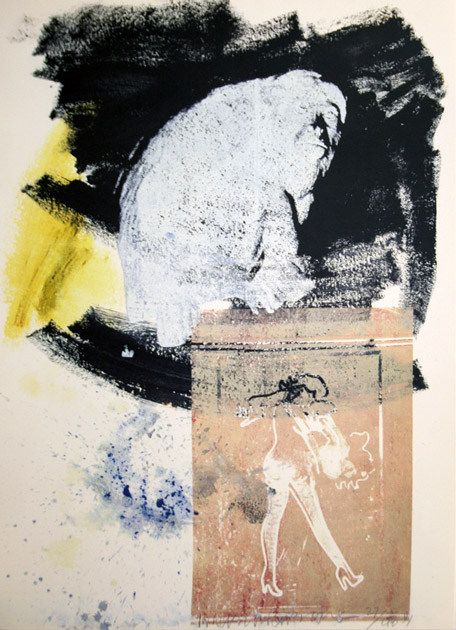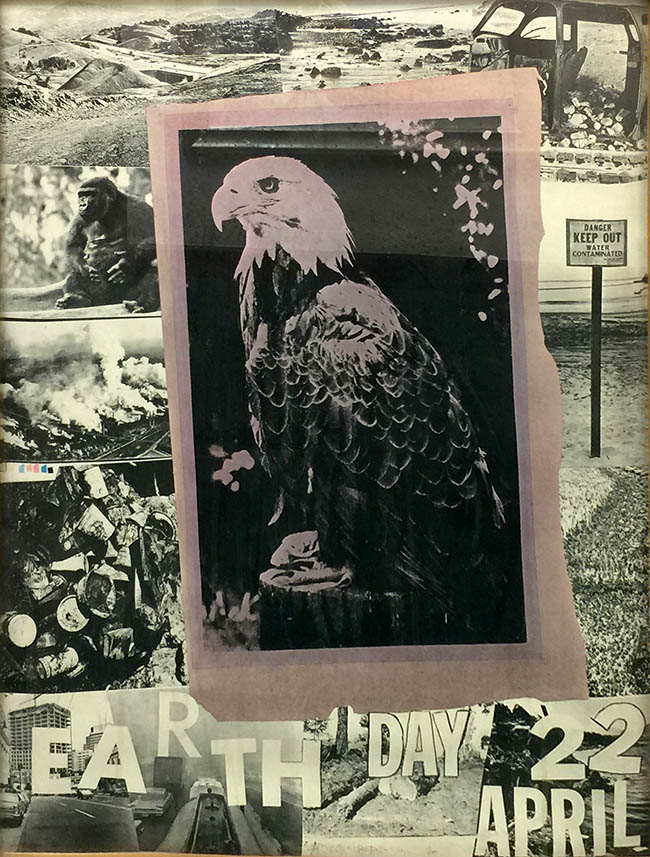Robert Rauschenberg
Most Distant Visible Part Of The Sea
$10,000.00
$7,500.00
Medium: Silkscreen And Collage On Paper
Date: 1979
Edition: PP 2/6
Size: 30.5 x 23 inches
Additional Details: Rauschenberg’s enthusiasm for popular culture and his rejection of the angst and seriousness of the Abstract Expressionists led him to search for a new way of painting. He found his signature mode by embracing materials traditionally outside of the artist’s reach. He would cover a canvas with house paint, or ink the wheel of a car and run it over paper to create a drawing, while demonstrating rigor and concern for formal painting. By 1958, at the time of his first solo exhibition at the Leo Castelli Gallery, his work had moved from abstract painting to drawings like “Erased De Kooning” (1953) (which was exactly as it sounds) to what he termed “combines.” These combines (meant to express both the finding and forming of combinations in three-dimensional collage) cemented his place in art history. One of Rauschenberg’s first and most famous combines was entitled “Monogram” (1959) and consisted of an unlikely set of materials: a stuffed angora goat, a tire, a police barrier, the heel of a shoe, a tennis ball, and paint. This pioneering altered the course of modern art. The idea of combining and of noticing combinations of objects and images has remained at the core of Rauschenberg’s work. As Pop Art emerged in the ’60s, Rauschenberg turned away from three-dimensional combines and began to work in two dimensions, using magazine photographs of current events to create silk-screen prints. Rauschenberg transferred prints of familiar images, such as JFK or baseball games, to canvases and overlapped them with painted brushstrokes. They looked like abstractions from a distance, but up close the images related to each other, as if in conversation. These collages were a way of bringing together the inventiveness of his combines with his love for painting. Using this new method he found he could make a commentary on contemporary society using the very images that helped to create that society. From the mid sixties through the seventies he continued the experimentation in prints by printing onto aluminum, moving plexiglass disks, clothes, and other surfaces. He challenged the view of the artist as auteur by assembling engineers to help in the production of pieces technologically designed to incorporate the viewer as an active participant in the work. He also created performance pieces centered around chance. To watch dancers on roller-skates (”Pelican”, 1963) or to hear the sound of a gong every time a tennis ball was hit (”Open Score”, 1966), was to witness an art that exchanged lofty ambitions for a sense of excitement and playfulness while retaining meaning. Hand signed and numbered in pencil. Artwork is in excellent condition. Certificate of Authenticity included. Comes with FREE custom wood frame with red and black matting. Frame size is 40x33".
Art ID: G17921C
Robert Rauschenberg was a prominent member of the American Post-War avant-garde. The artist’s sculpture-painting hybrids, known as Combines, broke through the two dimensionality of the canvas at a time when Abstract Expressionism dominated the scene. His seminal Neo-Dada work, Erased de Kooning (1953), consisted of ritualistically wiping out an original drawing he purchased from the famed painter. “I don't really trust ideas, especially good ones,” he once said. “Rather I put my trust in the materials that confront me, because they put me in touch with the unknown.” Born Milton Ernest Rauschenberg on October 22, 1925 in Port Arthur, TX, he was drafted into the Navy during World War II where he served as medical technician in San Diego. After the war, he traveled to Paris to study at the Académie Julian on the GI bill, where he met his future wife, Susan Weil. The pair went on to attend the Black Mountain College in North Carolina alongside John Cage and Merce Cunningham. After settling in New York in 1949, Rauschenberg began questioning the nature of painting through works such as Bed (1955) and Monogram (1955–1959), which utilized commercial imagery and mass produced objects. Many of the artist’s ideas foresaw the emergence of Andy Warhol and Pop Art in the 1960s. The artist died on May 12, 2008 in Captiva, FL. Rauschenberg’s works are held in the collections of the Tate Gallery in London, The Museum of Modern Art in New York, the Walker Art Center in Minneapolis, and the Kunstmuseum Basel, among others.

)


